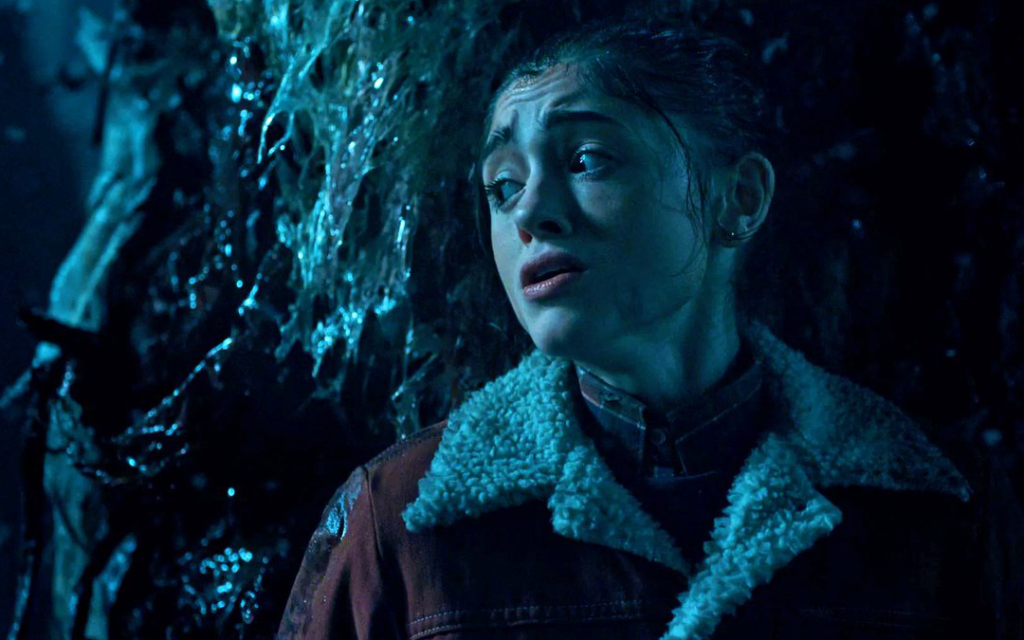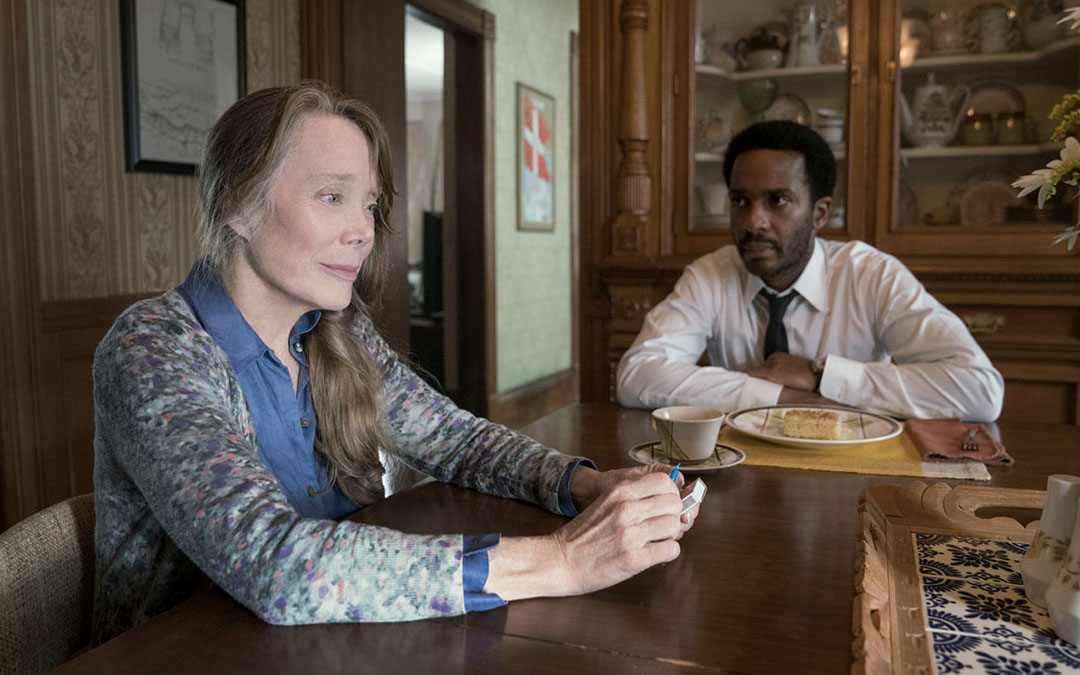All The Write Moves: 'Stranger Things'
July 15, 2019
Seeing as how the Netflix fantasy series Stranger Things is an idiosyncratic mixture of nostalgic pop-culture references and the wild imagination of creators Matt and Ross Duffer (who bill themselves as the Duffer Brothers), emulating the show in any direct way would be foolish. Similarly, because each brief season encompasses a massive amount of plot, trying to isolate how and why individual narrative elements work is challenging. Nonetheless, on the occasion of the show’s third season reaching audiences, it’s worth taking a moment to parse Stranger Things for broad storytelling insights.
That’s What Friends Are For
Firstly and most obviously—at least on a thematic level—Stranger Things is about chosen family. At the core of the show’s ensemble is a group of young boys who originally bonded while playing Dungeons & Dragons together. A life-threatening battle with supernatural forces in the first season links them for life, and as the series proceeds, new members join the clique—including a handful of adults—even as the passage of time, personal growth, and the discovery of new interests tests the cohesion of the group.
Stated clinically, the notion of chosen family sounds quite ordinary. But presented with thousands of delightful specific nuances, as it is throughout Stranger Things, the notion of chosen family becomes engrossing entertainment. In the first season, viewers marvel at how far Mike (Finn Wolfhard), Dustin (Gaten Matarazzo), Lucas (Caleb McLaughlin), and superpowered Eleven (Millie Bobby Brown) will go to protect Will (Noah Schnapp) when he is bedeviled by monsters. In the second season, the dynamics complicate when love blooms between Mike and Eleven, and when new arrival Max (Sadie Sink) earns a place in the group. The composition of the group changes yet again in season three.
It’s not difficult to guess where the Duffer Brothers learned that chosen families are compelling to watch. They often pay homage to family-themed adventure stories from the 1980s, especially those associated with director-producer Steven Spielberg. Like Spielberg, the Duffers understand that deep bonds between people produce something ephemeral and magical. Storytellers who credibly simulate that bond by constructing believable fictional social groups are able to infuse their work that that same rush.
Takeaway: The dynamics of tightly knit social groups are fascinating to watch.
Best of Both Worlds
Enchanting character work (inclusive of frequently uproarious humor) provides the emotional core for Stranger Things, while the actual plot is driven by the schemes of creatures from a supernatural realm. Each season, the show’s ensemble joins forces to battle monsters, as well as the humans who (intentionally or otherwise) aid the monsters. The balance the Duffer Brothers strike between fantasy and reality is central to the show’s DNA. Like many other aspects of Stranger Things, alas, this exact formula for balance is impossible to quantify. Would X percent more jokes undercut the horror? Would Y percent more horror undercut the jokes?
Nonetheless, what can be extrapolated from this aspect of Stranger Things is another idea traceable back to Spielberg. Like Spielberg, the Duffers realize that fantasy for its own sake appeals only to a niche audience. Fantasy that serves as a delivery device for some sort of human drama, however, has a better chance of crossing over to the mainstream. For example, Spielberg’s E.T. the Extra-Terrestrial (1982) is nominally about a space alien trapped on Earth, but the real protagonist is a young boy looking for meaning after his parents’ divorce.
If your writing tilts in the direction of fantasy, by all means, indulge yourself. The majority of history’s most successful feature films are fantasies. The contemporary realities of high budgets, photorealistic effects, and widescreen home presentation are also making television more welcoming to the fantasy genre than ever before. But before you commit to fantasy, ask yourself what you hope to accomplish. If your goal is simply to spin a yarn about things that don’t exist, then your potential audience is probably limited. If you can make genre the delivery device for a human narrative that stands tall on its own merits, then you’ve got the best of both worlds.
Takeaway: Fantasy stories with superlative character work transcend genre.
All I Need Is a Miracle
No work of art is perfect. The unfortunate truth of the Twitter era is that the more popular something becomes, the more quickly skeptics pounce on perceived faults. Stranger Things has not been immune to this conundrum, as seen by hostile Internet chatter about the behavior of adult character Jim Hopper (David Harbour), who has a serious anger-management issue this season. In terms of storytelling methodologies, though, another aspect of Stranger Things invites scrutiny, and that is the last-minute rescue.
Time and again throughout the third season, characters face deadly peril only to have friends burst onto the scene at the last possible moment and save them. To be fair to the Duffer Brothers, each of these last-minute rescues is set up in the traditional way. Here’s a generic explanation to avoid spoilers:
Let’s say Character No. 1 is being chased through a building by a monster, but manages to place a phone call to Character No. 2 at another location. Then we see Character No. 2 try to start a car, only to discover it’s out of gas. Cut back to Character No. 1 running. Then cut back to Character No. 2 at a gas station. Finally, cut back to Character No. 1 for an extended time—so long that we forget about Character No. 2—until the monster is about to attack. Boom! Character No. 2 drives right into the building and rescues Character No. 1.
This is a time-honored technique in popcorn-movie storytelling. However, when it gets used too frequently, the technique not only loses its power, it can diminish the credibility of the overall story. During its third season, Stranger Things comes dangerously close to overusing this technique. That being said, the 1980s movies and TV shows from which Stranger Things draws inspiration used this technique relentlessly, so the Duffer Brothers have a lot of leeway. It’s on brand.
The question is whether it’s on brand for you. Simply because a particular technique works well in other movies and TV shows does not mean it is universally appropriate. Viewers will almost always tolerate last-minute rescues in, say, superhero movies and Fast and Furious flicks. But does the same technique fit a serious ripped-from-headlines drama? Frustratingly, the answer is sometimes yes, sometimes no.
There’s a perfect tool for every job, and the screenwriter’s toolbox is full of interesting gadgets and gizmos. To belabor that analogy, the last-minute rescue is a blunt instrument, which works well for something as fantastical as Stranger Things. Other situations require precision instruments.
Takeaway: Last-minute rescues thrill audiences, but must be used judiciously.
Written by: Peter Hanson
Peter Hanson is a Los Angeles-based writer, filmmaker and teacher. He directed the screenwriting documentary Tales from the Script, and he teaches at Pepperdine University and UCLA Extension. He provides script consulting at www.GrandRiverFilms.com.- Topics:
- Discussing TV & Film




